This week, the internet’s collective chortling at a particularly yonic stadium for Qatar’s World Cup may have actually doomed the project to abandonment. But it’s hardly the first — or most overt — anatomical architecture in recent years. In fact, it’s just the latest in a centuries-spanning tradition.
Of course, most buildings end up being phallic, simply out of structural necessity. Stacking floor upon columns upon floor, in rough terms, creates a dick-shaped building. But the sinuous curves and organic shapes of female anatomy? That’s a tougher proposition, structurally speaking.
But first of all: When did humans start designing buildings — consciously or not — based on their own bodies? The tradition goes way back to Roman emperor and prodigal architect Vitruvius — who introduced the idea that buildings should be based on the basic proportions of the human body. Remember Da Vinci’s famous Vitruvian Man? Same dude.

There’s an environmental logic to phallic architecture, too: After all, the vast majority of building protrude out of the earth, rather than into it. In those simple terms, all architecture that moves upward is phallic and all architecture that pierces the ground is vaginal — right down to our subway tunnels:
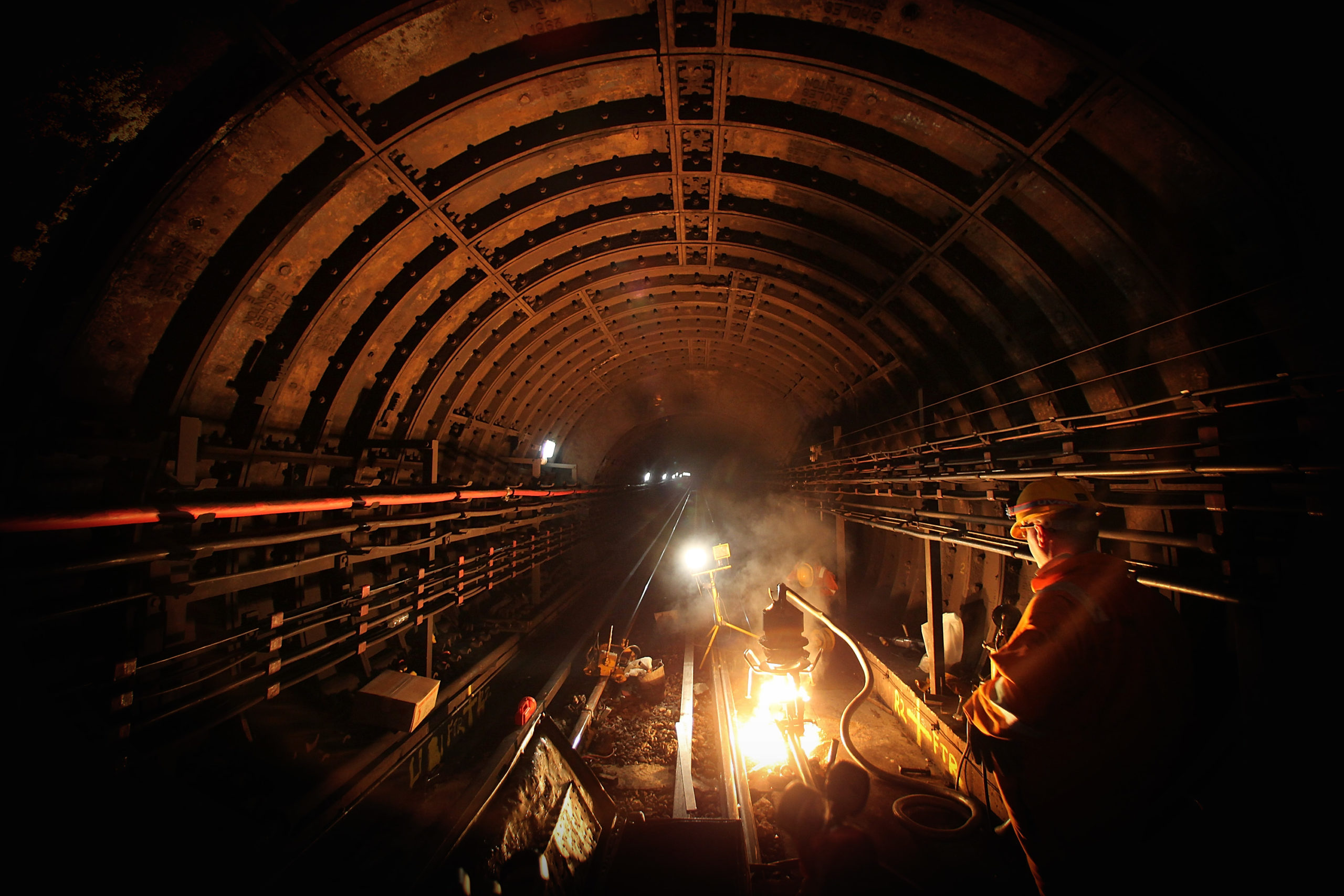
London Underground Night-Shift Workers. Image: Getty/Peter Macdiarmid
But there’s more than one perspective from which to judge a building — what about the way a space is organised, or what it looks like from the inside? Is it possible that we’re building feminine buildings — right alongside our male ones — without even being aware of it?
That’s exactly what Gloria Steinem described in her foreword to the Vagina Monologues:
In the 1970s… I found an obscure history of religious architecture that assumed a fact as if it were common knowledge: the traditional design of most patriarchal buildings of worship imitates the female body. Thus, there is an outer and inner entrance, labia majora and labia minora; a central vaginal aisle toward the altar; two curved ovarian structures on either side; and then in the sacred center, the altar or womb, where the miracle takes place — where males give birth.
In other words, architects — male and female! — build vaginal architecture without even being cognisant of it. It’s only when we see a particularly, uh, figural building, that we realise what we’ve done.
But accident-Freudian or not — doesn’t explain the proliferation of giant vagina buildings over the past century. For that, we can thank Modernism in general, the epoch that brought us a dizzying array of new building types — not only rational ones, but also curving, organic ones.
Take Dutch architect Hendrik Wijdeveld’s deeply vaginal People’s Theatre, designed in 1918:
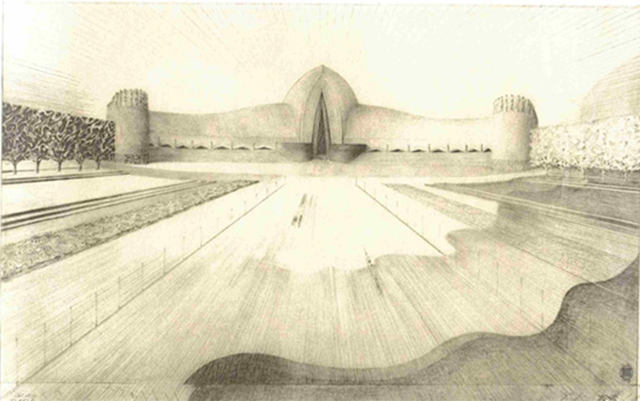
Early modern flights of fancy like Wijdeveld’s informed later movements, from the incredible organic concrete shell of Eero Saarinen’s 1962 TWA Terminal at JFK:
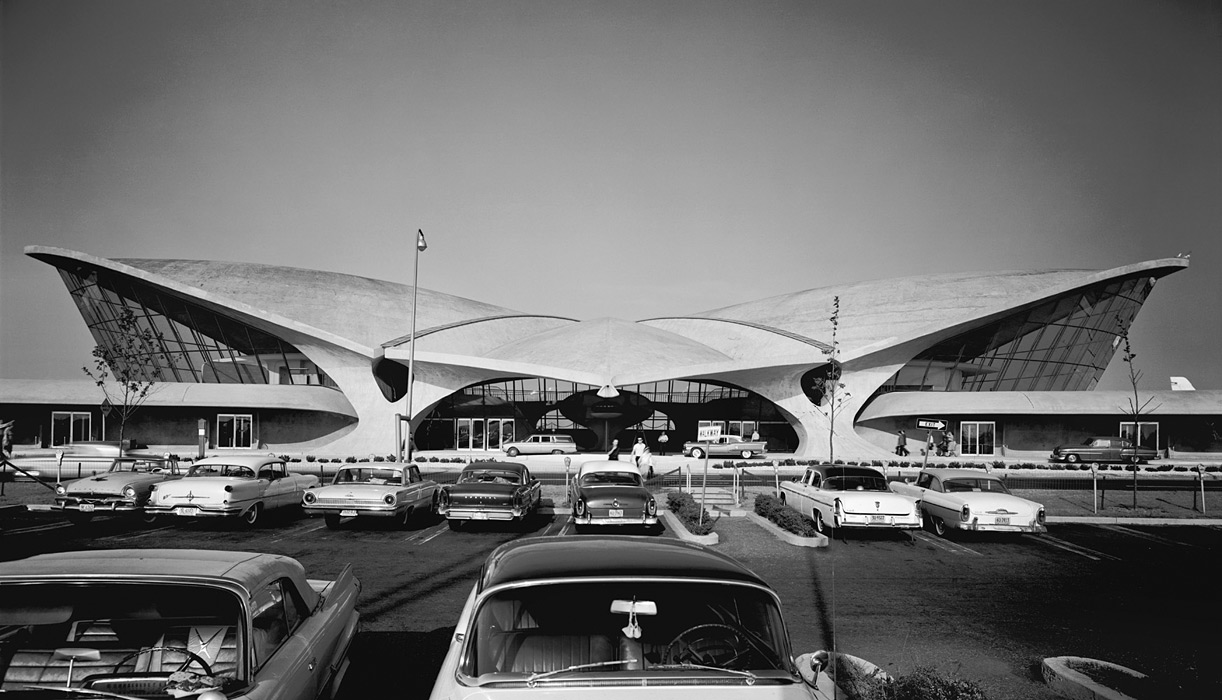
Photo: Ezra Stoller
To the elastic curves of 1970s Googieism, see here in a paraboloid roof of a Kansas gas station once run by Vickers Petroleum Company:
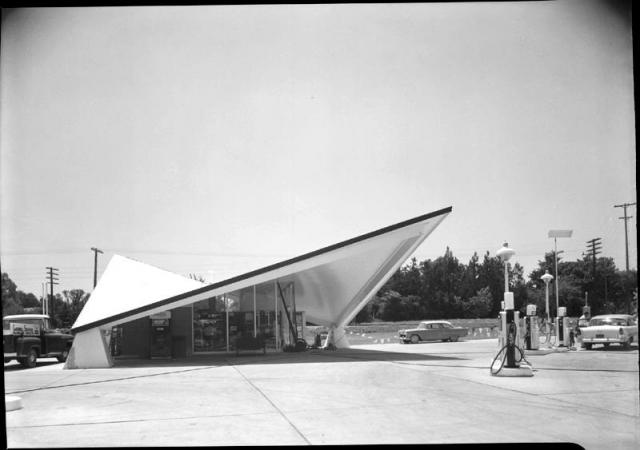
Even in the thick of the Po-Mo 1980s, female shapes popped up. Architect Sheldon Schlegman designed Chicago’s Crain Communications Building, a tower whose diamond-shaped top has earned it the nickname “the vagina building:”
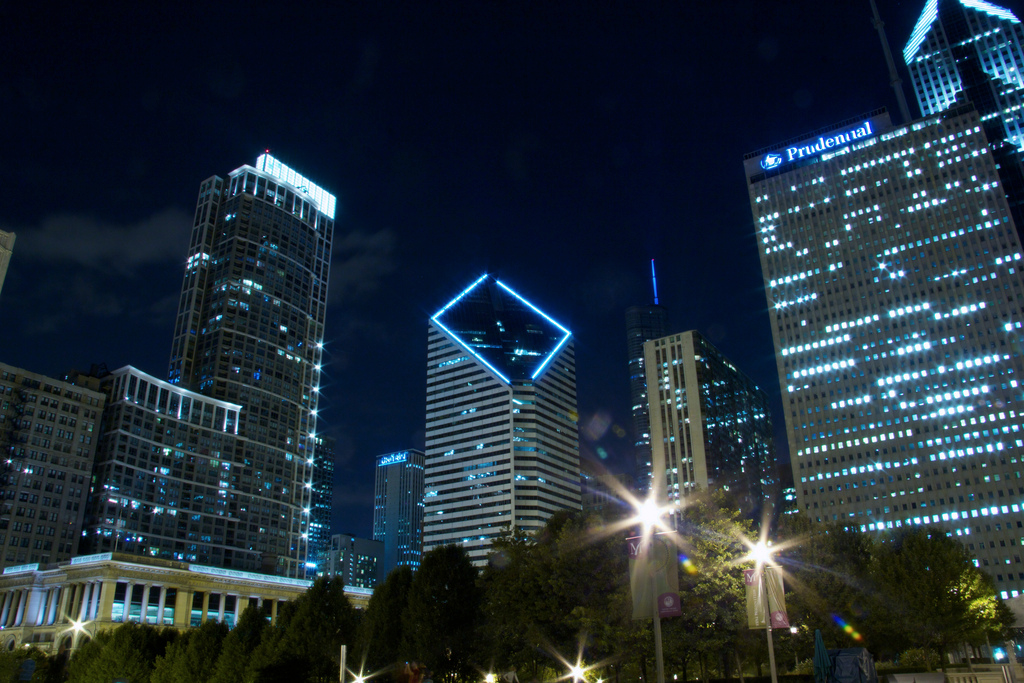
Image: Keith Garner.
During the same years as Schlegman was inadvertently making his way into the gendered architecture history books, another designer was working on entirely intentional anatomical design: The Swiss set designer H.R. Giger, whose work on the set of Alien made him famous:

Giger’s drawings would go on to influence a new generation of architects who, thanks to the advent of digital modelling, could actually bring the lithe forms of Giger’s work into reality.
Zaha Hadid, the most famous arbiter of the movement, has brought those digital experiments of the 1980s — when she was an architecture student — into reality in the 21st century. After all, Al Wakrah Stadium, is hardly the first Hadid building to be called out for its anatomical specificity:
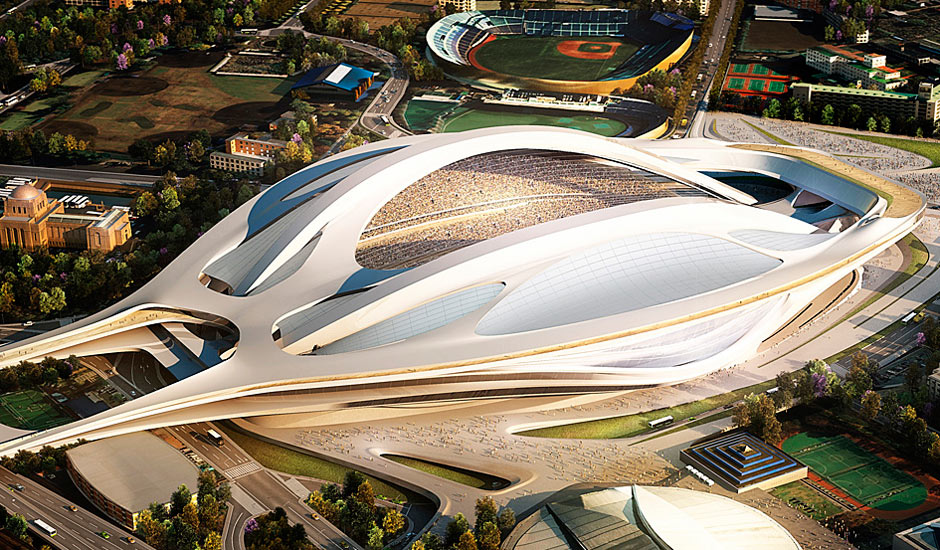
Zaha Hadid’s Tokyo Olympic Stadium.
Foster + Partners — the architects behind London’s famously phallic Gherkin — have participated in the trend, as well. See their design for Virgin Galactic’s Spaceport America:
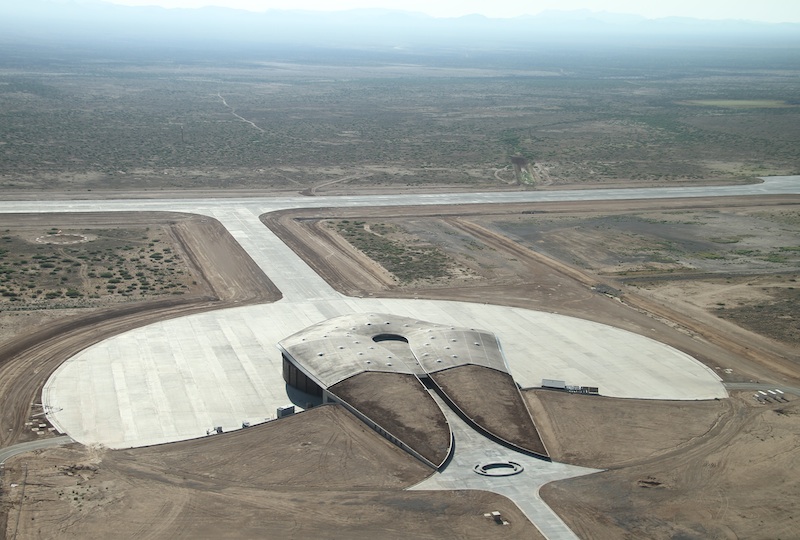
Even tall buildings — like Kenzo Tange’s Mode Gakuen Cocoon Tower, a 17-story tower in Tokyo — can be sculptural to the extent that they suggest female forms:
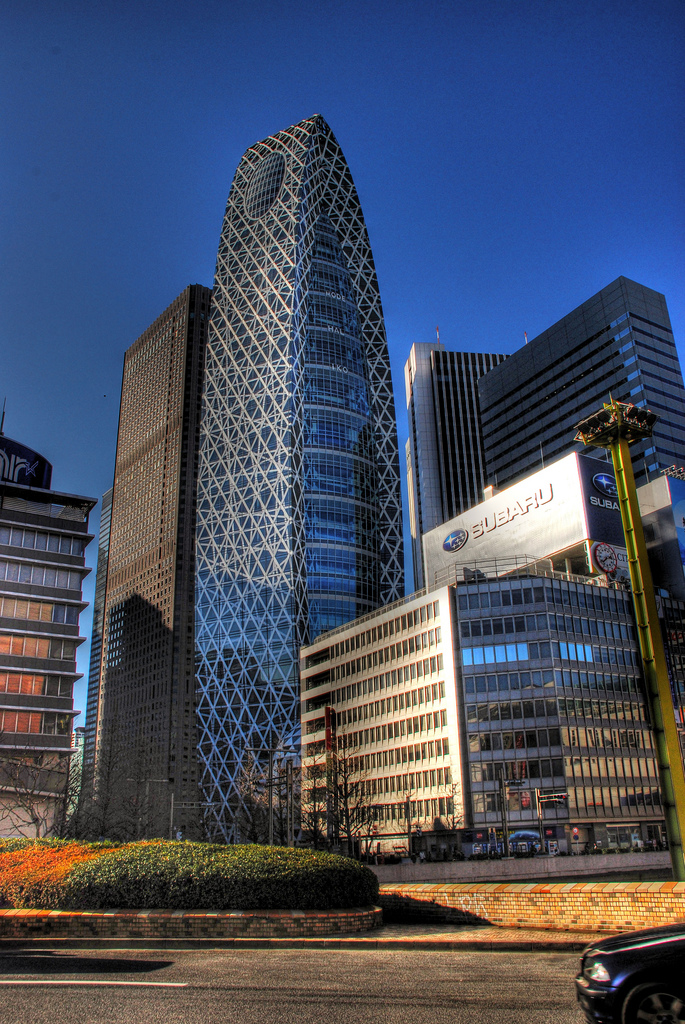
Image: Noli Fernan “Dudut” Perez
But a building doesn’t have to look organic to garner comparisons. One of Beijing’s most recognisable buildings, the CCTV Tower — known locally as “the big underpants” — has been compared to lady parts (it’s also been compared to a cartoon sex act, actually):
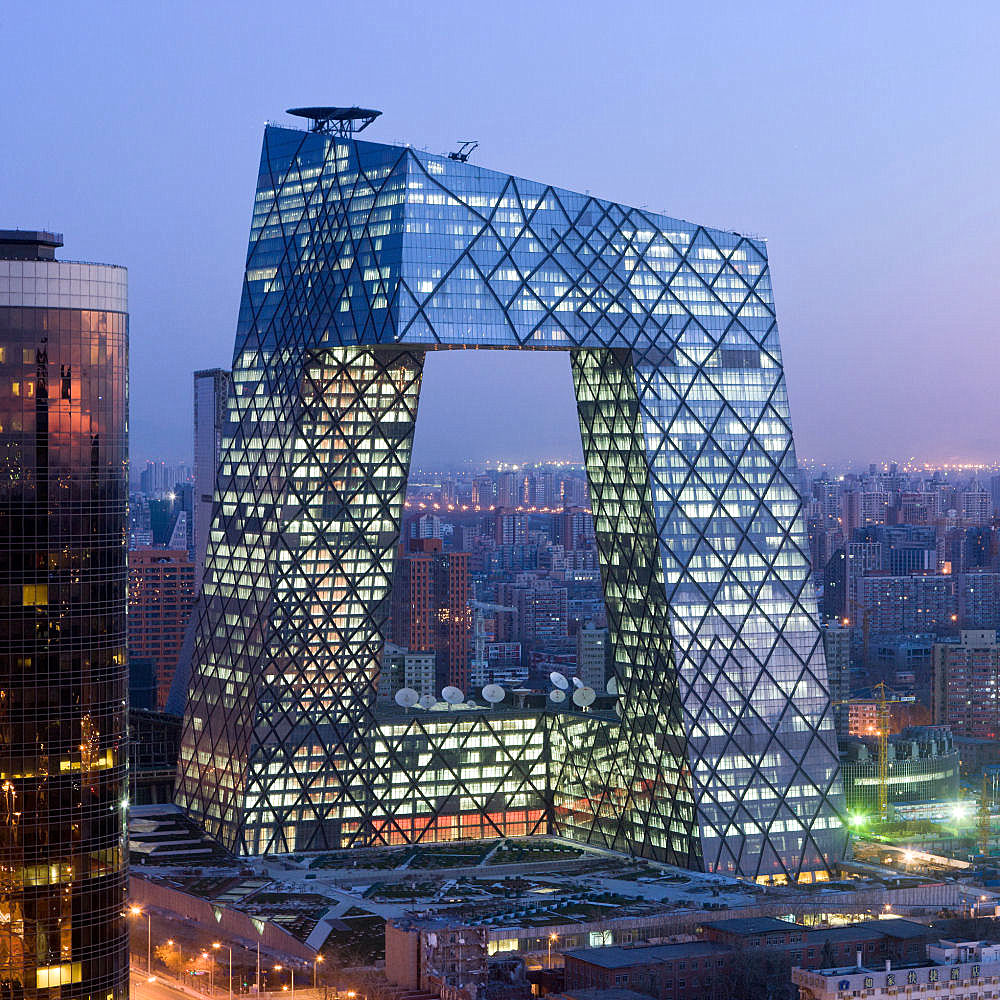
Image: Iwan Baan.
Why? Because it’s shaped like an “O,” rather than an “I,” a form made possible by structural engineer Ole Scheeren’s first-of-its-kind structural exoskeleton:

Dmitry Foronov/Wikimedia.
Which brings us to a third, unexamined explanation for the recent proliferation of vaginal buildings: The rapid-fire pace at which structural engineering has developed over the past few decades.
Most skyscrapers are phallic simply because of our limited ability to fight gravity.
What all of these buildings have in common — from paraboloid concrete roofs of the 1960s to the gravity-defying arcs of the 2000s — is that they were spurred by major leaps in building technology. Engineering wonders like super-columns, extreme cantilevers, and steel exoskeletons have let us move beyond the phallus — a simple icon — into more complex shapes, which most of us identify as feminine:
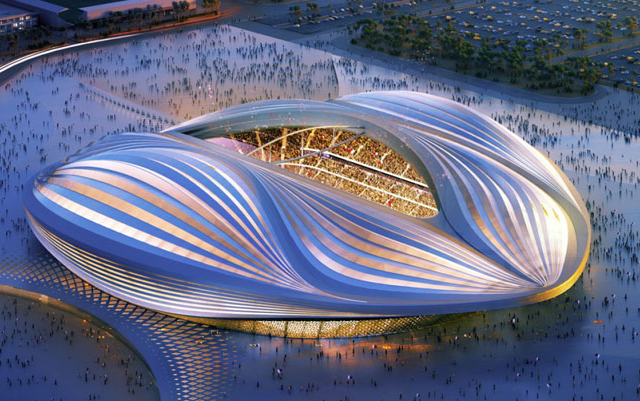
In other words, architects are designing more “vaginal” buildings because they can. Advanced building technologies are allowing us to move beyond phallocentric architecture. We shouldn’t just celebrate them for promoting anatomical equality, though — we should celebrate them because, much like their inspiration, they are marvels of engineering.
Lead Image: Chris Ubik
